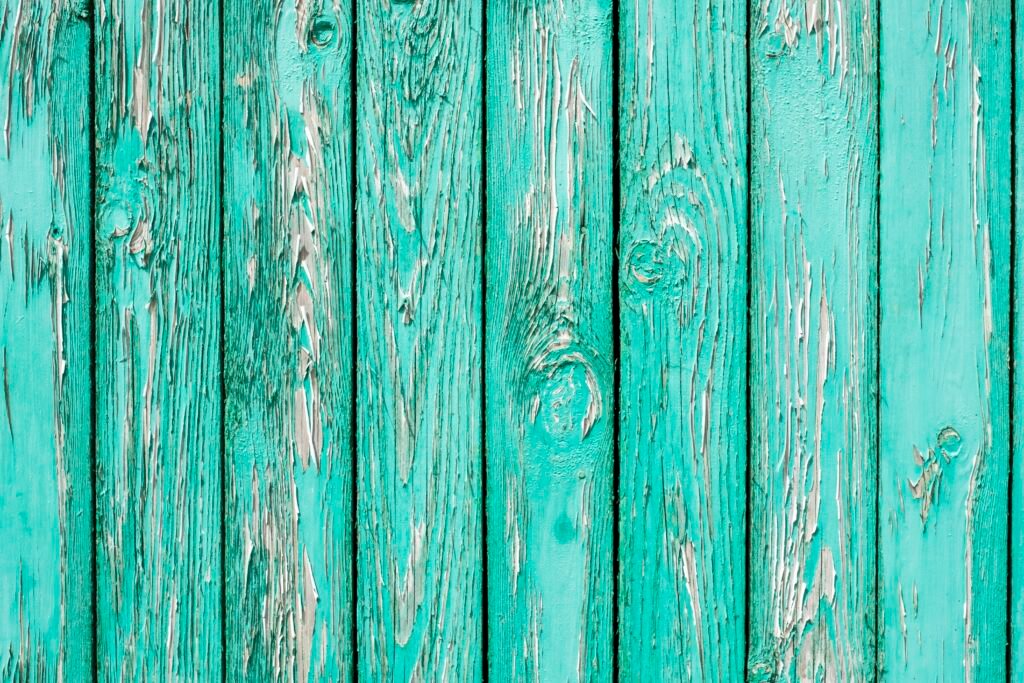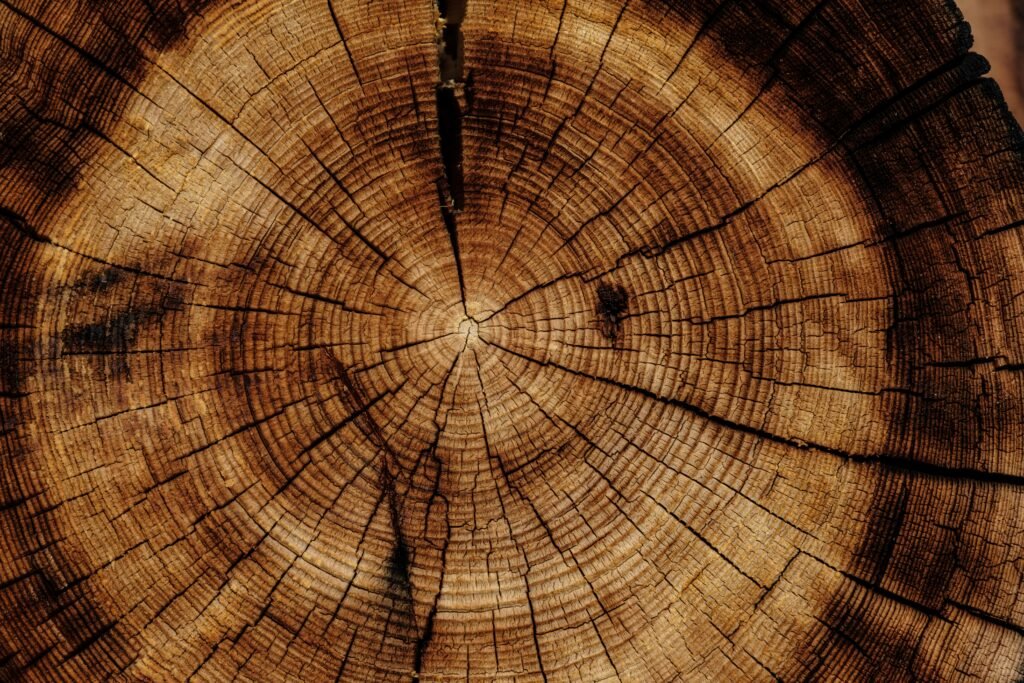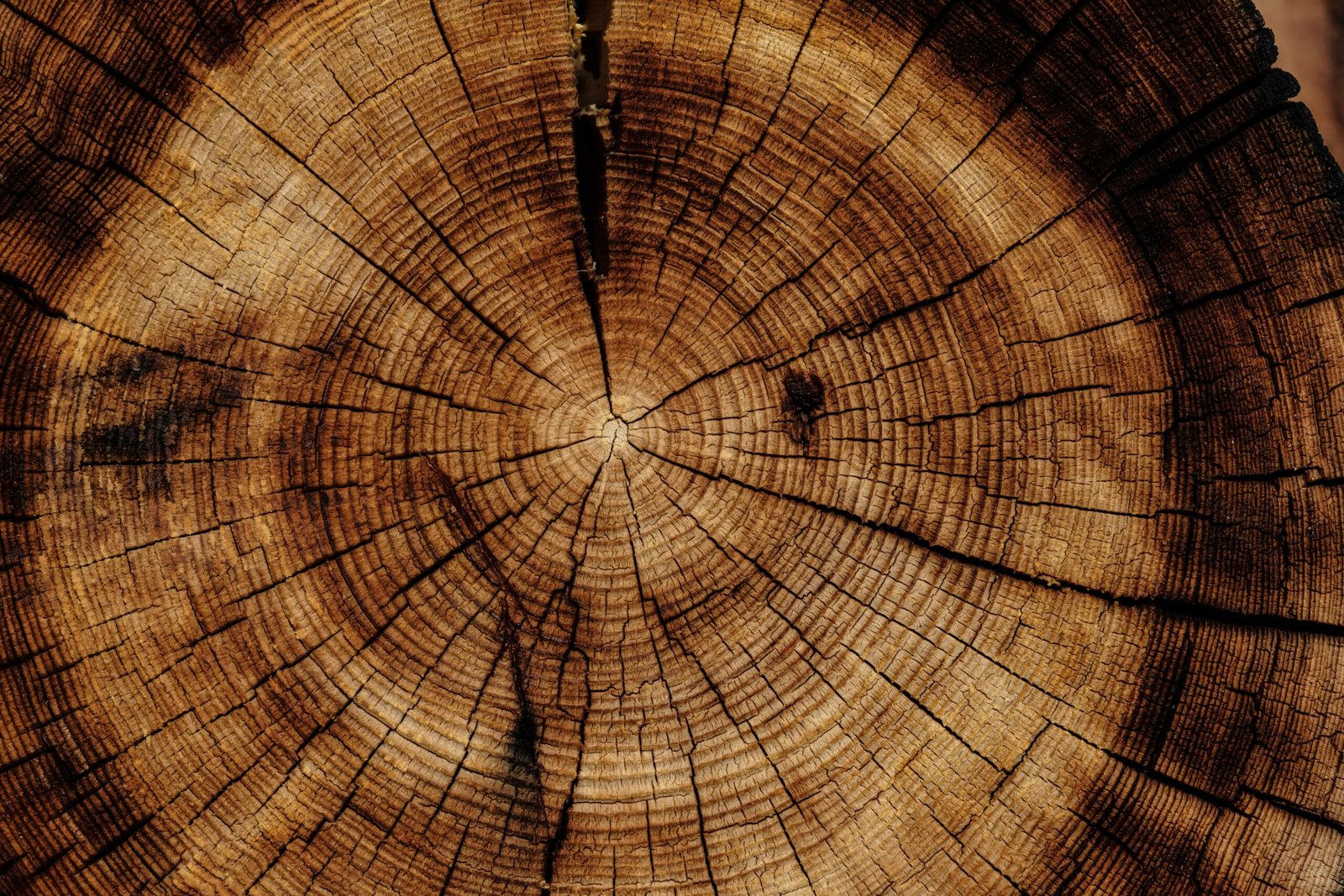Imagine walking into a room that exudes warmth and elegance, with beautifully crafted wood furniture that instantly catches your eye. You can’t help but be drawn to the natural grain and texture of the wood, which adds a touch of sophistication to any space. But how do you ensure that the natural look and feel of wood lasts for years to come, without losing its original charm? This article explores the various methods and techniques that can be used to enhance and protect the natural beauty of wood, so you can enjoy its timeless allure for generations.

This image is property of images.unsplash.com.
Understanding the natural characteristics of wood
Wood is a versatile and beautiful material. To fully appreciate and care for wood, it is essential to understand its natural characteristics. These characteristics include the grain patterns and textures, natural color variations, as well as knots and burls.
Grain patterns and textures
Each wood species has its unique grain pattern and texture, which adds to the natural beauty of the material. Grain patterns can be straight, wavy, or even curly, giving wood a distinct personality. The texture of the wood can range from smooth to rough, depending on the species and how it is cut.
When choosing wood for a project, consider how the grain pattern and texture will complement the overall aesthetic you are trying to achieve. Whether you prefer a more rustic or contemporary look, taking into account the grain patterns and textures will help ensure that the final result meets your expectations.
Natural color variations
Wood comes in a wide range of natural colors, from light blondes to deep, rich browns. These variations in color are caused by several factors, such as the species, age, and where the tree grew. Some woods, like maple, have a lighter, more uniform color, while others, such as walnut, have striking color variations and unique grain patterns.
Embracing these natural color variations can add visual interest and character to your woodworking projects. By understanding the natural colors of different wood species, you can choose the perfect wood for your desired aesthetic.
Knots and burls
Knots and burls are fascinating features that occur naturally in wood. Knots are caused by the growth of branches, resulting in a circular pattern in the wood. Burls, on the other hand, are unusual growths on a tree, resulting in intricate and often highly figured patterns.
While some may view knots and burls as imperfections, others appreciate them for their unique and organic appeal. Including these characteristics in your woodworking projects can add a touch of rustic charm or create a visually stunning focal point.
Choosing the right wood species
Choosing the right wood species for your project is crucial to achieving the desired outcome. Consider both the application and the characteristics of different wood species to make an informed decision.
Consider the application
The first step in choosing the right wood species is to consider the application. Will the wood be used for furniture, flooring, or outdoor structures? Different wood species have varying levels of durability, resistance to moisture, and ability to withstand outdoor elements.
For indoor projects, hardwoods like oak, cherry, and walnut offer excellent strength and durability. Softwoods like pine and cedar are popular choices for outdoor applications due to their natural resistance to decay and insects.
Understanding different wood species
To make an informed decision when choosing wood species, it’s important to understand their unique qualities. Some woods, like teak and cedar, have natural oils that provide excellent resistance to rot and weather damage. Others, like mahogany and cherry, have stunning grain patterns and rich colors that make them highly sought after for fine furniture.
Researching different wood species and understanding their characteristics will help you choose the right wood for your specific project. Consider factors such as hardness, stability, and susceptibility to insects and decay.
Matching wood species to desired aesthetics
When selecting wood species, it’s essential to match them to your desired aesthetics. Are you looking for a warm and traditional look or a sleek and modern appearance? Different wood species possess unique colors, grain patterns, and textures that can enhance the overall aesthetic of your project.
For a rustic and natural look, consider using wood species like oak or hickory with prominent grain patterns. If you prefer a more refined and contemporary style, woods like maple or birch with a more consistent grain can be a perfect choice.
By understanding the natural characteristics of different wood species and considering the desired aesthetics, you can select the wood that best fits your project.
Preventing and minimizing wood damage
Wood is a durable material, but it still requires proper care and protection to prevent and minimize damage. By taking some simple precautions, you can keep your wood looking beautiful and ensure its longevity.
Protecting against moisture
One of the most significant threats to wood is moisture. Excessive moisture can cause warping, swelling, and even mold and rot. To protect against moisture damage, it is crucial to take preventative measures.
For indoor woodwork, such as furniture or flooring, ensure the area is properly ventilated and maintain a consistent humidity level. Avoid placing wood furniture directly against walls to allow for airflow.
For outdoor wood structures, such as decks or fences, use pressure-treated or naturally weather-resistant woods like cedar or redwood. Apply a sealant or waterproofing product regularly to create a barrier against moisture penetration.
Avoiding direct sunlight exposure
Direct sunlight can cause wood to fade and dry out, leading to cracks and damage over time. To prevent sun damage, avoid placing wood furniture or structures in direct sunlight for prolonged periods.
If you have wood surfaces exposed to sunlight, use window coverings or UV-protective coatings to minimize the impact. Consider repositioning furniture periodically to ensure even sunlight exposure and prevent uneven fading.
Preventing scratches and dents
Wood surfaces are susceptible to scratches and dents, especially in high-traffic areas. To prevent damage, use protective measures such as furniture pads or coasters under heavy objects. Use placemats or tablecloths to protect dining tables from scratches caused by cutlery.
For floors, use area rugs or mats in high-traffic areas to minimize wear. Regularly sweep or vacuum to remove dirt and debris that can cause scratches. Consider using furniture gliders to prevent furniture legs from scratching the floor when moved.
By taking these preventative measures, you can effectively protect your wood surfaces from damage and keep them looking their best for years to come.
Cleaning and maintaining wood surfaces
Regular cleaning and maintenance are vital for preserving the natural beauty of wood. By using appropriate cleaning products, dusting regularly, and applying protective coatings, you can ensure that your wood surfaces remain in excellent condition.
Using appropriate cleaning products
When cleaning wood surfaces, it is essential to use appropriate products that will not damage or strip away the natural oils and finishes. Avoid harsh chemicals and abrasive cleaners that can cause discoloration or surface damage.
Instead, opt for gentle cleaners specifically formulated for wood, such as mild dish soap or specialized wood cleaners. Always follow the manufacturer’s instructions and test cleaners on a small, inconspicuous area first to ensure compatibility.
Dusting and regular cleaning
Dusting wood surfaces regularly helps prevent the buildup of dirt and debris that can scratch the surface over time. Use a soft, lint-free cloth or a microfiber duster to gently remove dust from the surface.
For regular cleaning, dampen a soft cloth or sponge with a mild wood cleaner and wipe the surface in the direction of the grain. Avoid excessive moisture or scrubbing, as it can cause damage to the wood.
Applying protective coatings and finishes
To maintain and enhance the appearance of wood surfaces, apply protective coatings and finishes. These products provide a barrier that protects against moisture, scratches, and UV damage.
For indoor wood furniture and surfaces, consider using furniture polish or wax to provide a protective layer and enhance the natural luster. Apply the product with a soft cloth, following the manufacturer’s instructions.
For outdoor wood structures, such as decks or fences, apply a sealant or stain regularly to protect against weather elements. These products penetrate the wood and provide a protective barrier that prevents water damage and fading.
By incorporating regular cleaning and maintenance into your routine, you can extend the life of your wood surfaces and keep them looking beautiful for years to come.

This image is property of images.unsplash.com.
Avoiding harsh chemicals and processes
When caring for wood, it is essential to avoid using harsh chemicals and processes that can damage the material. By opting for eco-friendly and natural alternatives, you can preserve the natural look and feel of wood while minimizing environmental impact.
Avoiding bleach and other strong cleaners
Bleach and other strong household cleaners should be avoided when cleaning or treating wood surfaces. These harsh chemicals can strip away the natural oils and finishes, leading to discoloration or damage.
Instead, opt for milder solutions such as vinegar or lemon juice diluted in water. These natural alternatives are effective at removing stains and dirt without compromising the integrity of the wood.
Be cautious with sanding and refinishing
Sanding and refinishing wood can be a great way to restore its beauty, but it should be approached with caution. Excessive sanding or using coarse sandpaper can remove too much material, damaging the wood.
When refinishing wood, choose gentle sanding techniques and fine-grit sandpaper to preserve the natural texture of the wood. Consider using non-toxic finishes like water-based polyurethane instead of traditional oil-based products.
Using eco-friendly and natural alternatives
To maintain a sustainable approach to wood care, explore eco-friendly and natural alternatives to traditional wood products. Look for low VOC (volatile organic compound) finishes and sealants that are safer for both you and the environment.
Consider using natural oils, such as linseed oil or tung oil, to condition and protect wood surfaces. These oils penetrate the wood, enhancing its natural beauty while providing a protective layer.
By avoiding harsh chemicals and opting for eco-friendly alternatives, you can care for your wood while promoting sustainability.
Preserving wood’s natural luster
Wood has a natural luster that adds to its beauty. To enhance and preserve this luster, there are several techniques and products you can use.
Applying natural wax and oils
Natural wax and oils are excellent choices for enhancing the natural luster of wood. They penetrate the surface, moisturizing the wood, and creating a subtle sheen. Beeswax and carnauba wax are popular choices for protecting and polishing wood surfaces.
To apply wax, use a soft cloth or applicator and rub it into the wood in circular motions. Allow the wax to dry, then buff the surface with a clean cloth to achieve a glossy finish.
Oils like teak oil and Danish oil are also effective at enhancing the natural luster of wood. Apply the oil according to the manufacturer’s instructions, allowing it to penetrate the wood before wiping away any excess.
Buffing and polishing techniques
Buffing and polishing can restore shine and remove minor scratches on wood surfaces. Use a soft cloth or a buffing pad attached to a drill to gently buff the surface. Apply a small amount of polish or wax for better results.
When buffing or polishing, work in small sections and follow the grain of the wood. Avoid applying excessive pressure, as it can cause damage. Regular buffing and polishing can help maintain the wood’s natural luster over time.
Enhancing the grain with wood fillers
Wood fillers are products used to fill in gaps, cracks, and imperfections in wood surfaces. They can also be used to highlight and enhance the wood grain. Choose a filler that matches the color of the wood or opt for a transparent filler to maintain the natural look.
Apply the wood filler according to the manufacturer’s instructions, ensuring that it is evenly spread and level with the surface. Once dry, sand the area lightly with fine-grit sandpaper to blend it seamlessly with the surrounding wood.
By using these techniques and products, you can enhance and preserve the natural luster of wood, keeping it looking vibrant and beautiful.

This image is property of images.unsplash.com.
Maintaining humidity levels for wood
Maintaining proper humidity levels is crucial for the health and longevity of wood. Fluctuations in humidity can cause the wood to expand or contract, leading to warping, cracks, and other damage. By monitoring and controlling indoor humidity and making seasonal adjustments, you can ensure the stability of your wood.
Monitoring and controlling indoor humidity
Use a hygrometer to monitor the indoor humidity levels where your wood is located. Ideally, the humidity should be between 40% and 50%, with minor fluctuations. If the humidity levels are consistently above or below this range, consider using a humidifier or dehumidifier to regulate the moisture.
Avoid placing wood furniture or structures near heat sources or in areas with high humidity, such as basements or bathrooms. Excessive heat or moisture can cause the wood to swell or warp.
Using humidifiers or dehumidifiers
Humidifiers and dehumidifiers are valuable tools for maintaining proper humidity levels for your wood. Humidifiers add moisture to the air, preventing the wood from drying out and cracking. Dehumidifiers, on the other hand, remove excess moisture, preventing the wood from swelling and warping.
Place a humidifier or dehumidifier in the room where your wood is located, and adjust the settings according to the recommended humidity range. Regularly check the levels using a hygrometer and make any necessary adjustments to ensure optimal conditions.
Seasonal adjustments for wood expansion and contraction
Wood naturally expands and contracts with changes in temperature and humidity. To prevent damage, it is essential to make seasonal adjustments to account for these fluctuations.
During the colder months when heating systems are used, the air tends to be drier. In response, wood may lose moisture and shrink. To minimize this, use a humidifier to add moisture to the air and prevent excessive drying of the wood.
In the warmer months when air conditioning is used, the air tends to be cooler and more humid. This can cause the wood to absorb moisture and expand. To mitigate this, use a dehumidifier to remove excess moisture and maintain stable humidity levels.
By monitoring humidity levels and making seasonal adjustments, you can help prolong the life of your wood and prevent damage caused by changes in moisture content.
Protecting wood from pests and insects
Wood is vulnerable to pests and insects that can cause significant damage if left unchecked. Regular inspection, prevention, and treatment methods are essential to protect your wood from these pests.
Preventing termite infestation
Termites are one of the most destructive pests for wood. To prevent termite infestation, take preventative measures such as:
- Keeping wood away from direct contact with soil, as termites can easily access wood this way.
- Ensuring proper drainage and removing any moisture sources near your wood structures.
- Using pressure-treated or naturally termite-resistant woods like cedar or redwood for outdoor structures.
- Regularly inspecting wood for signs of termite activity, such as mud tubes or small holes.
If you suspect termite activity, consult a professional pest control specialist for further inspection and treatment.
Treating and protecting against wood-boring beetles
Wood-boring beetles, such as woodworms or powderpost beetles, can cause extensive damage to wood. To treat and protect against these pests:
- Ensure wood is properly seasoned and dried to discourage beetle infestation.
- Apply insecticide treatments to the wood before sealing or finishing.
- Regularly inspect wood for small holes, sawdust-like frass, or beetle larvae.
- If infestation is detected, consult a professional pest control specialist for appropriate treatment methods.
Avoiding wood decay caused by fungi
Wood decay caused by fungi, commonly referred to as rot, can compromise the structural integrity of wood. To prevent wood decay:
- Ensure wood structures have proper ventilation and are kept dry.
- Avoid direct contact between moisture sources and wood, as fungi thrive in damp conditions.
- Treat wood with fungicides or wood preservatives to inhibit fungal growth.
- Regularly inspect wood for signs of rot, such as softness, discoloration, or a musty odor.
If wood decay is detected, consult a professional for proper assessment and treatment options.
By implementing preventative measures and regularly inspecting your wood for signs of pests or decay, you can protect and preserve its integrity.
Preserving outdoor wood structures
Outdoor wood structures, such as decks, fences, or pergolas, are exposed to harsh weather elements that can cause significant damage over time. To preserve these structures and maintain their natural look and feel, take appropriate protective measures.
Sealing and staining outdoor wood
Sealing and staining outdoor wood structures is crucial for protecting them against moisture, UV damage, and other environmental factors. These treatments create a barrier that prevents water absorption and minimizes the impact of sun exposure.
Apply a high-quality wood sealer or stain with UV protection to all exposed surfaces of the wood. Follow the manufacturer’s instructions for application and maintenance. Regularly inspect the wood and reapply the sealer or stain as needed to ensure ongoing protection.
Regular inspection and maintenance
Regularly inspecting outdoor wood structures is key to identifying and addressing issues before they escalate. Perform visual inspections for signs of rot, mold, or insect activity. Check for loose boards or fasteners and tighten or replace as necessary.
Perform routine maintenance tasks, such as cleaning the surface, removing debris, and clearing gutters or drains. Regularly sweep or rinse the wood surface to prevent the buildup of dirt or leaves that can trap moisture and cause damage.
Protecting against weather elements
Weather elements, such as rain, snow, and excessive sunlight, can cause significant damage to outdoor wood structures. Protect against these elements by:
- Installing gutters or downspouts to direct water away from the wood.
- Using weather-resistant woods such as cedar or redwood for outdoor projects.
- Providing shade or using awnings to minimize direct sun exposure.
- Clearing snow or ice promptly to prevent moisture buildup and freezing.
By regularly inspecting, maintaining, and protecting outdoor wood structures, you can extend their lifespan and keep them looking their best.
Preserving wood while promoting sustainability
Preserving wood while promoting sustainability involves responsibly sourcing materials and using eco-friendly practices. By using reclaimed or salvaged wood, ensuring responsible logging practices, and supporting certified sustainable wood certifications, you can contribute to the conservation of our natural resources.
Using reclaimed or salvaged wood
Reclaimed or salvaged wood refers to wood that has been previously used and then repurposed for new projects. By using reclaimed wood, you give it a new life, reducing the demand for new materials and minimizing waste.
Look for suppliers or salvage yards that specialize in reclaimed wood. This wood often has unique character, history, and patina that adds a distinct touch to your projects while reducing your environmental impact.
Ensuring responsible logging practices
Responsible logging practices are essential for preserving forest ecosystems and biodiversity. When purchasing wood, look for suppliers that adhere to sustainable forestry practices such as selective logging and reforestation.
Sustainable forestry practices ensure that trees are harvested in a way that promotes forest regeneration and reduces the impact on wildlife and the environment. Look for wood products certified by recognized organizations such as the Forest Stewardship Council (FSC) or the Programme for the Endorsement of Forest Certification (PEFC).
Supporting certified sustainable wood certifications
Certified sustainable wood certifications, such as the FSC or PEFC, ensure that wood products come from responsibly managed forests. These certifications verify that the wood is sourced legally, protects forest ecosystems, and supports the rights and livelihoods of local communities.
When purchasing wood products, look for the FSC or PEFC labels. By supporting certified sustainable wood, you contribute to the protection of our forests and the long-term sustainability of the wood industry.
By incorporating these sustainable practices into your woodworking projects, you can help protect and preserve our natural resources.
In conclusion, understanding the natural characteristics of wood, choosing the right wood species, preventing and minimizing wood damage, cleaning and maintaining wood surfaces, avoiding harsh chemicals and processes, preserving wood’s natural luster, maintaining humidity levels, protecting wood from pests and insects, preserving outdoor wood structures, and promoting sustainability are all essential aspects of preserving the natural look and feel of wood. By following these guidelines, you can ensure that your wood remains beautiful and sustainable for years to come.
